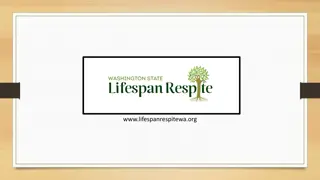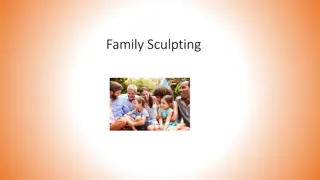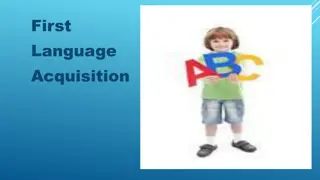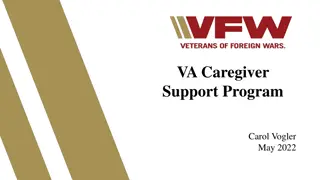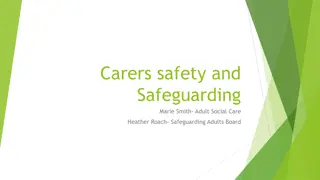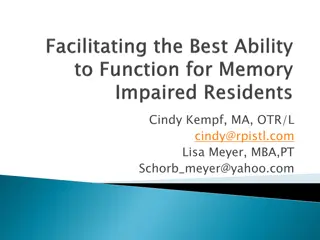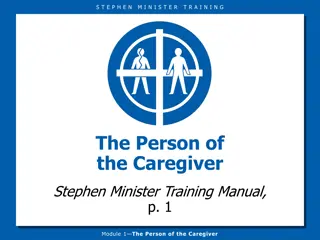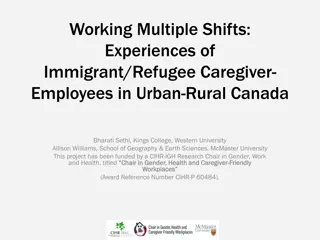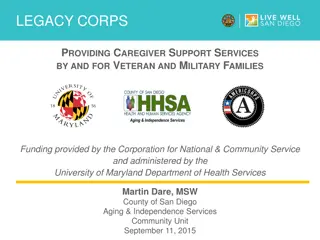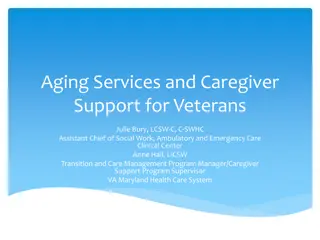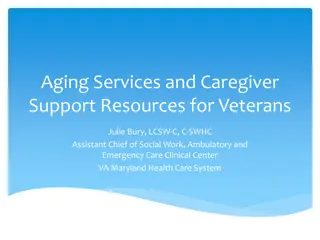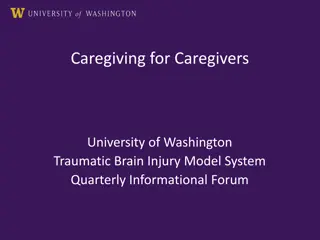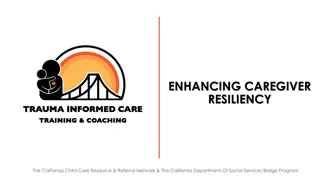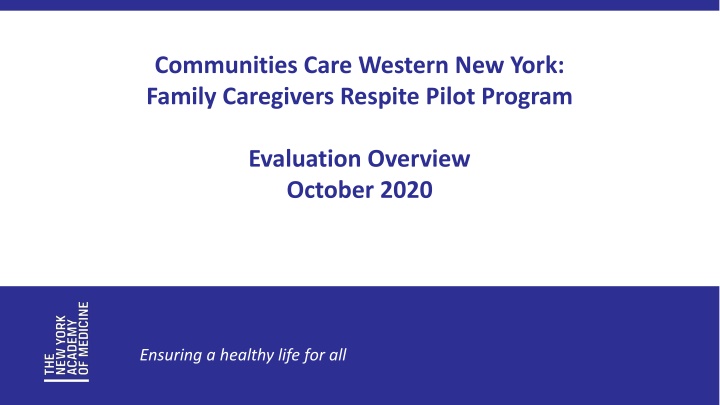
Family Caregiver Respite Program Evaluation Overview
This overview presents the evaluation of the Family Caregiver Respite Pilot Program in Western New York, focusing on promoting a healthy life for all. It covers the expertise of the Center for Evaluation and Applied Research, the evaluation approach, developmental evaluation design, results-based accountability framework, key focus areas, and sample evaluation questions at the organization and systems level.
Download Presentation

Please find below an Image/Link to download the presentation.
The content on the website is provided AS IS for your information and personal use only. It may not be sold, licensed, or shared on other websites without obtaining consent from the author. If you encounter any issues during the download, it is possible that the publisher has removed the file from their server.
You are allowed to download the files provided on this website for personal or commercial use, subject to the condition that they are used lawfully. All files are the property of their respective owners.
The content on the website is provided AS IS for your information and personal use only. It may not be sold, licensed, or shared on other websites without obtaining consent from the author.
E N D
Presentation Transcript
Communities Care Western New York: Family Caregivers Respite Pilot Program Evaluation Overview October 2020 Ensuring a healthy life for all
CENTER FOR EVALUATION AND APPLIED RESEARCH Expertise in conducting formative, process and outcome evaluation on topics related to health and well-being, including: Aging, community-clinical partnerships, behavioral health Use qualitative and quantitative methods, including surveys, interviews, focus groups, analysis of health care claims and health records Findings reported to program leadership and staff, participants, funders and other stakeholders 2
RESPITE PILOT PROGRAM EVALUATION APPROACH 3
DEVELOPMENTAL EVALUATION DESIGN Flexible, to reflect: The diversity of funded projects That projects are pilots o Require information regarding feasibility, acceptability, change, etc. o Uncertainty regarding measurable outcomes Bi-directional communication: To ensure that evaluation plan meets stakeholder needs So that findings can inform interventions 4
RESULTS-BASED ACCOUNTABILITY FRAMEWORK How much did we do? How well did we do it? Is anyone better off? 5
FOCUS AREAS Creative problem solving in developing community projects Value of collaboration and partnerships Increased access to and use of respite programs among caregivers of older adults in Western New York counties Improved caregiver well-being Feasibility and value of innovation Commonalities and differences between programs 6
SAMPLE EVALUATION QUESTIONS: ORGANIZATION AND SYSTEMS LEVEL To what extent were funded programs implemented as planned, including barriers and facilitators to implementation, as well as capacity to creatively and effectively respond to impediments? To what extent were there changes to, and expansions of, community collaborations and linkages to support caregivers of older adults? 7
SAMPLE EVALUATION QUESTIONS INDIVIDUAL LEVEL Is there increased access to and use of respite programs among caregivers of older adults? What are the characteristics of caregivers most/least engaged in new programming? To what extent and in what ways have there been changes in caregiver outcomes, including physical and mental health, health- related quality of life, well-being, and health care use? 8
EVALUATION PLANNING PROCESS Review program documents and meet with program leads to identify: Goals and objectives Data collection capacity and processes Priorities for evaluation Identification of commonalities across programs, as well as unique attributes of interest 9
EVALUATION PLANNING PROCESS - 2 Work collaboratively to develop written evaluation plans including: Program specific evaluation questions Instruments and processes for data collection Timeline Analysis and reporting plan Program specific and common elements Phone meetings: pilot team staff and NYAM staff to finalize evaluation plan and support implementation 10
EVALUATION METHODS Project data: participant records, meeting documents, reports to funders Pre-post surveys of program participants incorporating key indicators (e.g., Caregiver Intensity Index) Stakeholder interviews (e.g., staff of funded programs, program participants) Potential collaboration with Centene and/or Fidelis for claims analysis and to support sustainability 11
UTILITY AND PRODUCTS Reports of preliminary findings for quality assurance and quality improvement purposes Reports to funders, partners and other stakeholders to document progress and outcomes Broader dissemination documenting lessons learned, promising practices, and other findings 12
QUESTIONS? SUGGESTIONS? 13
CONTACT INFORMATION Linda Weiss phone: 212-822-7298, email: lweiss@nyam.org 14

